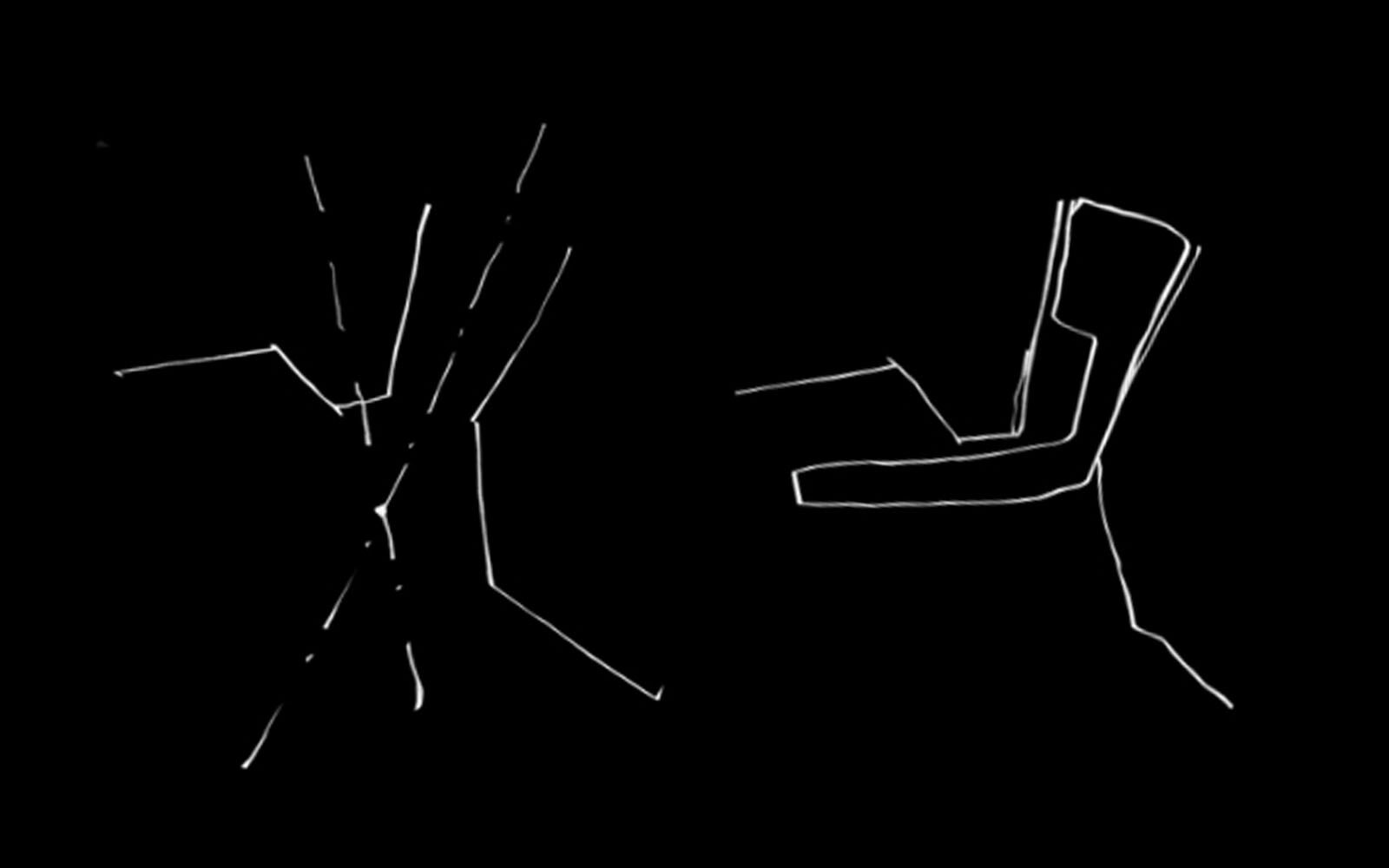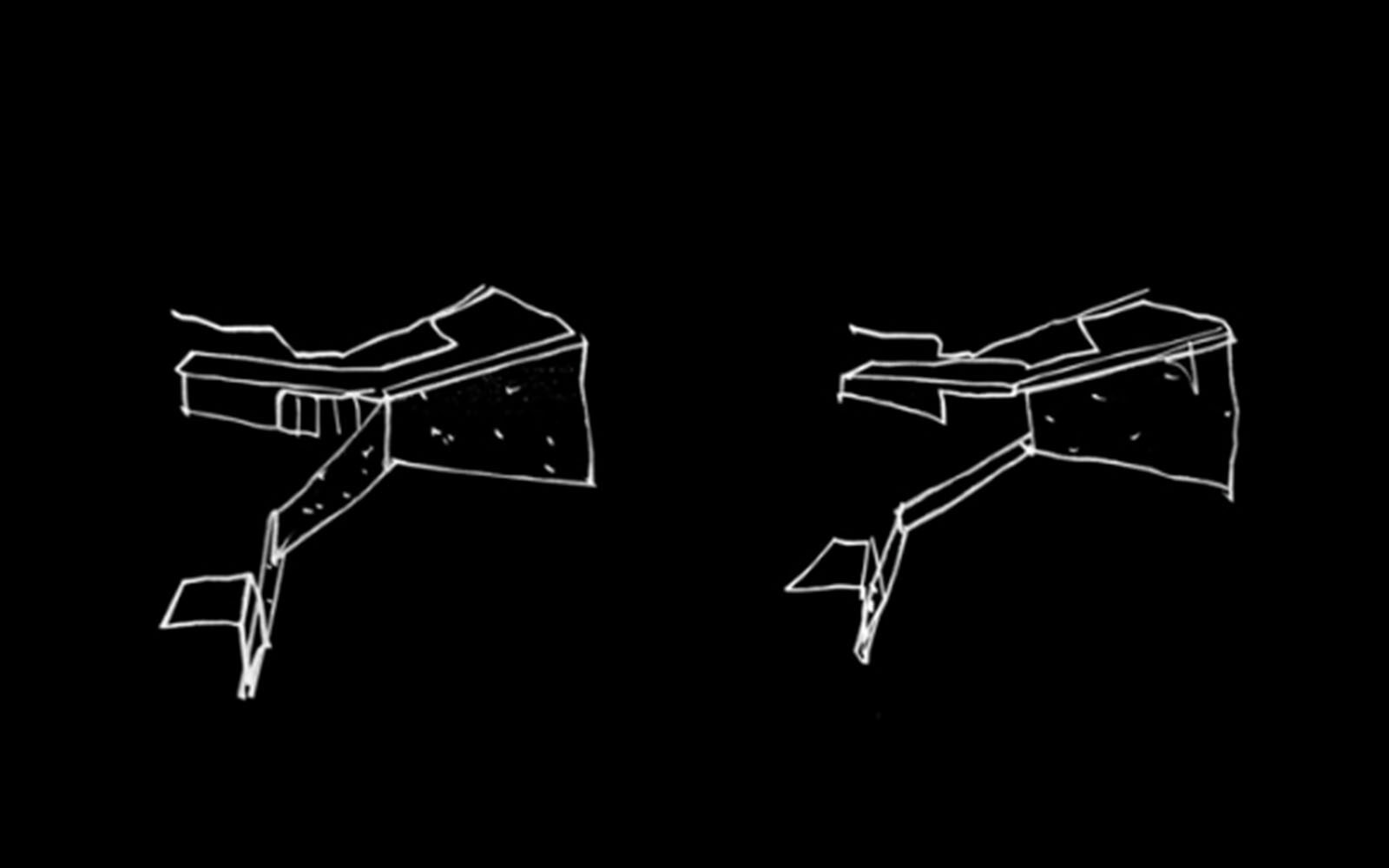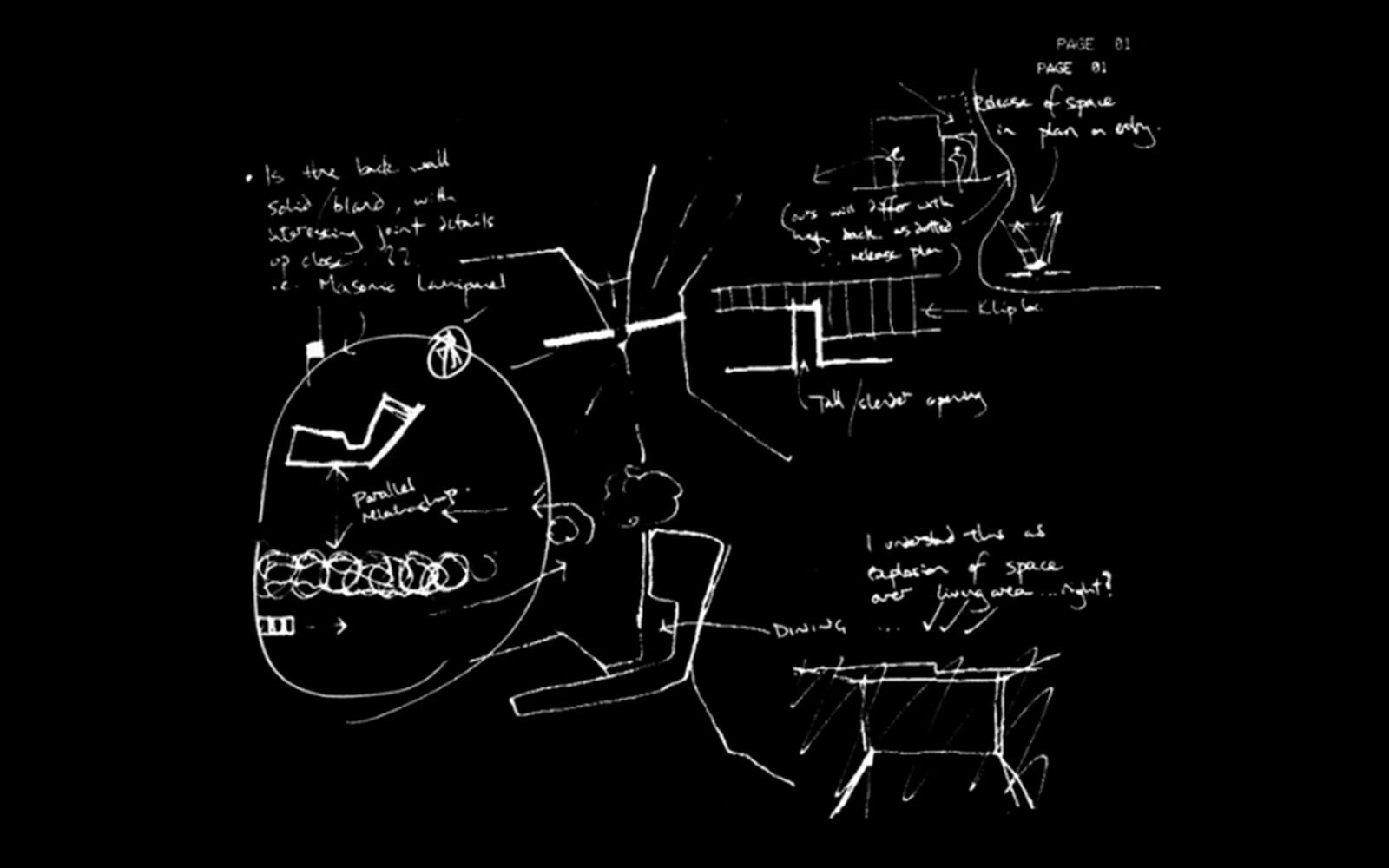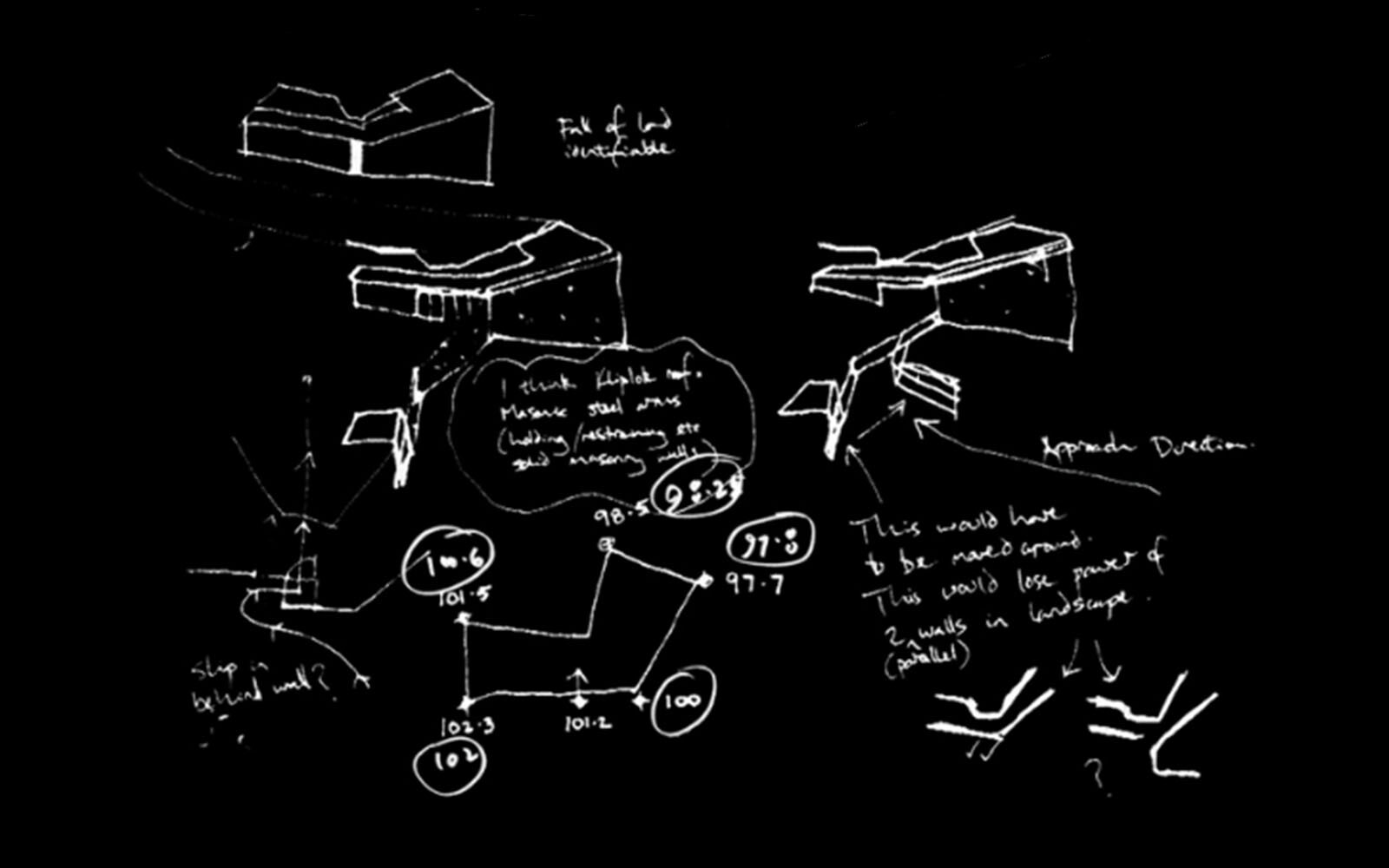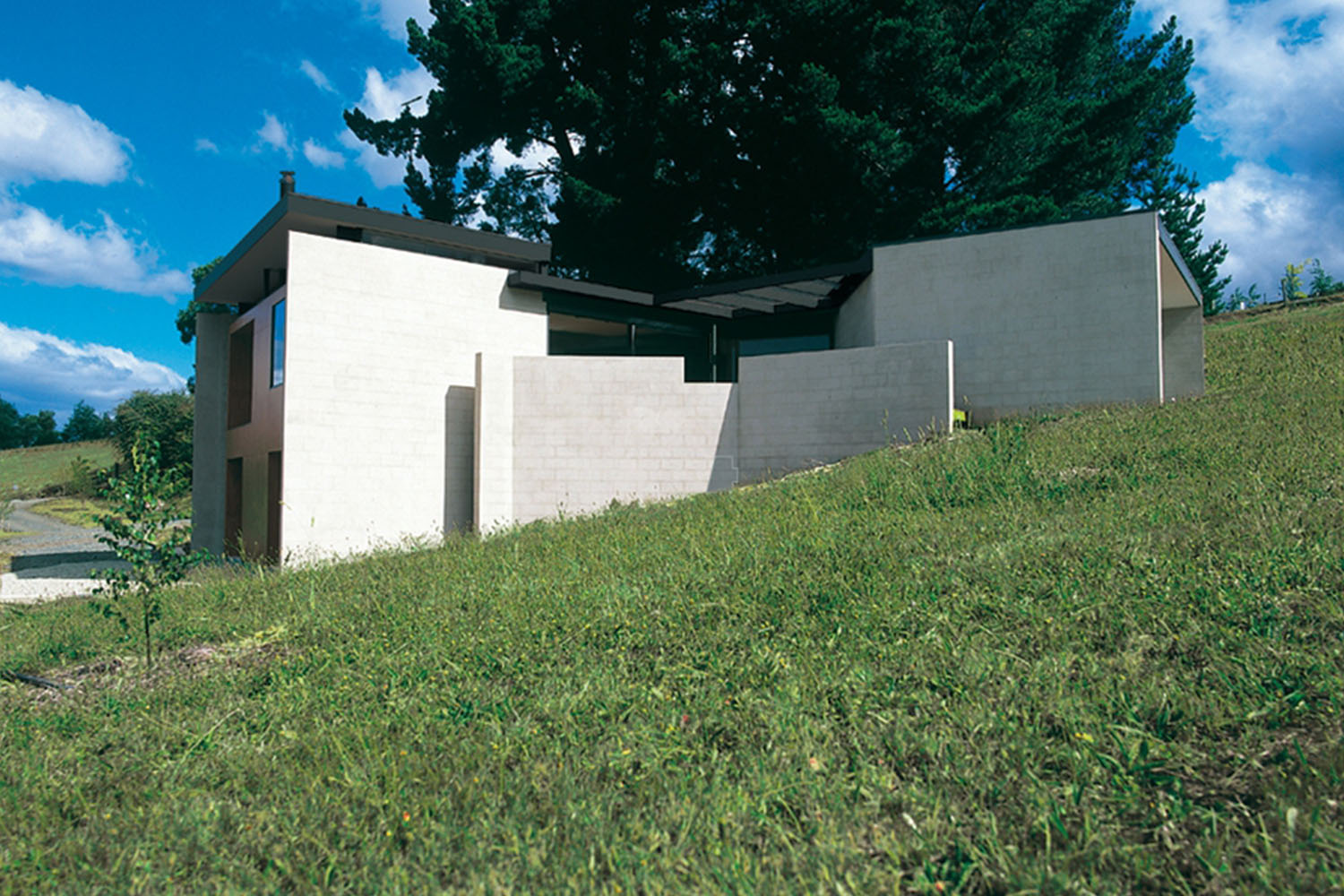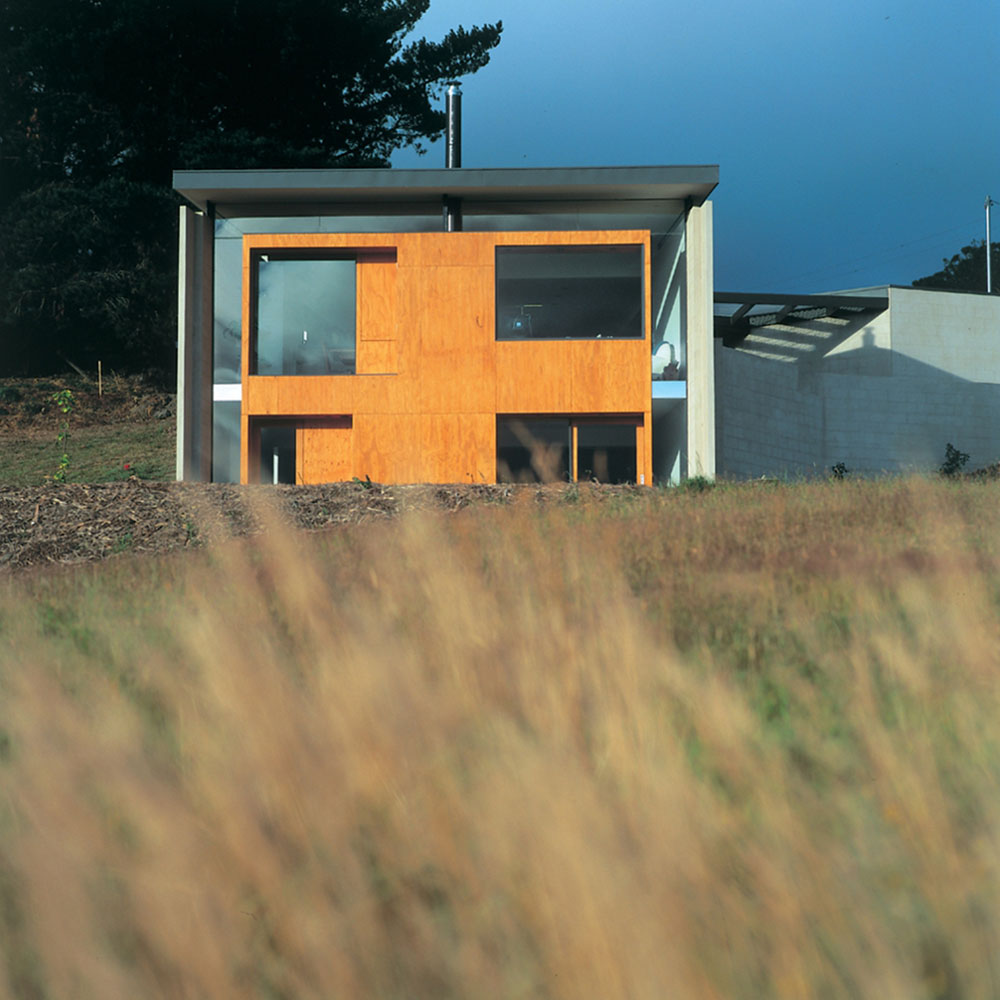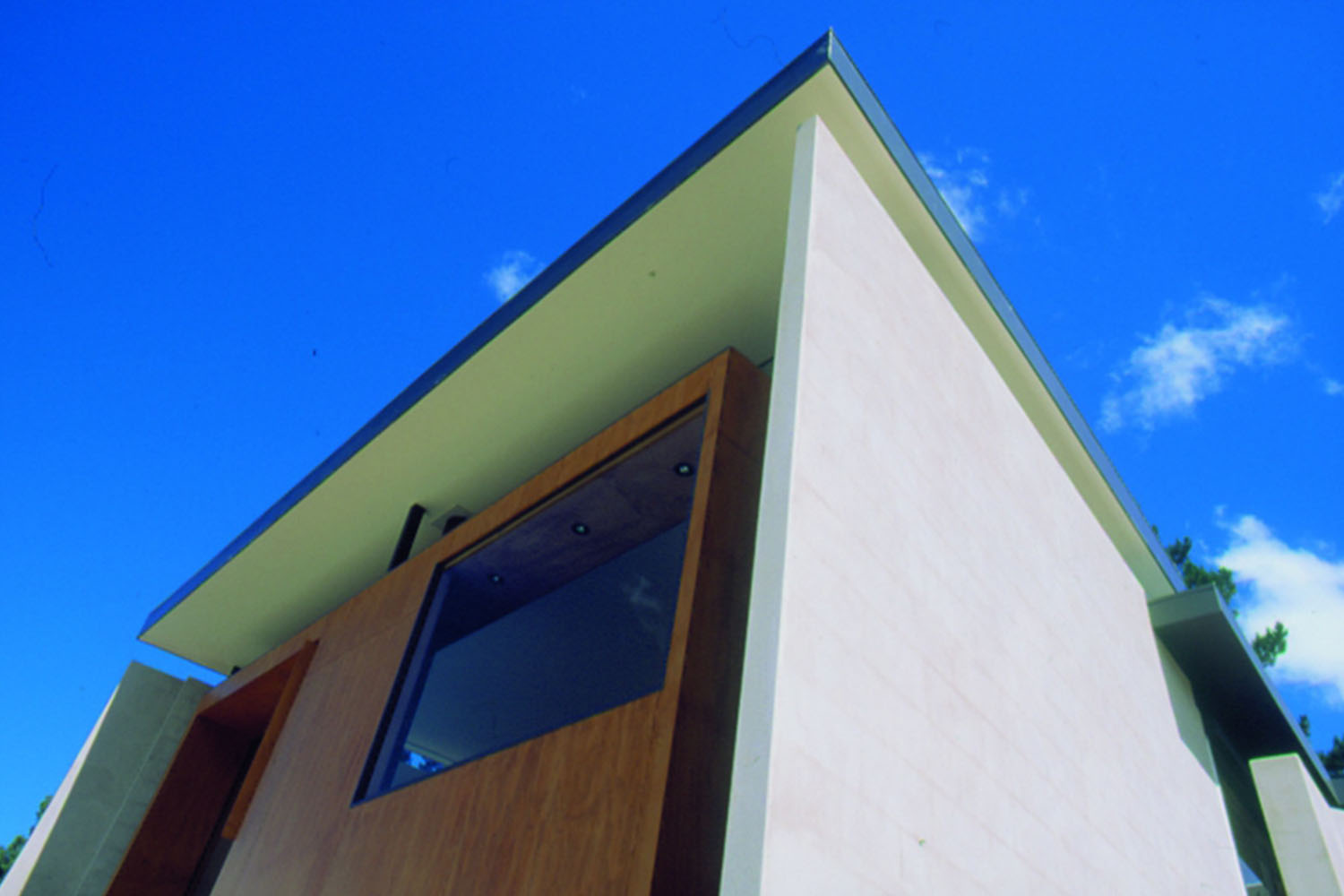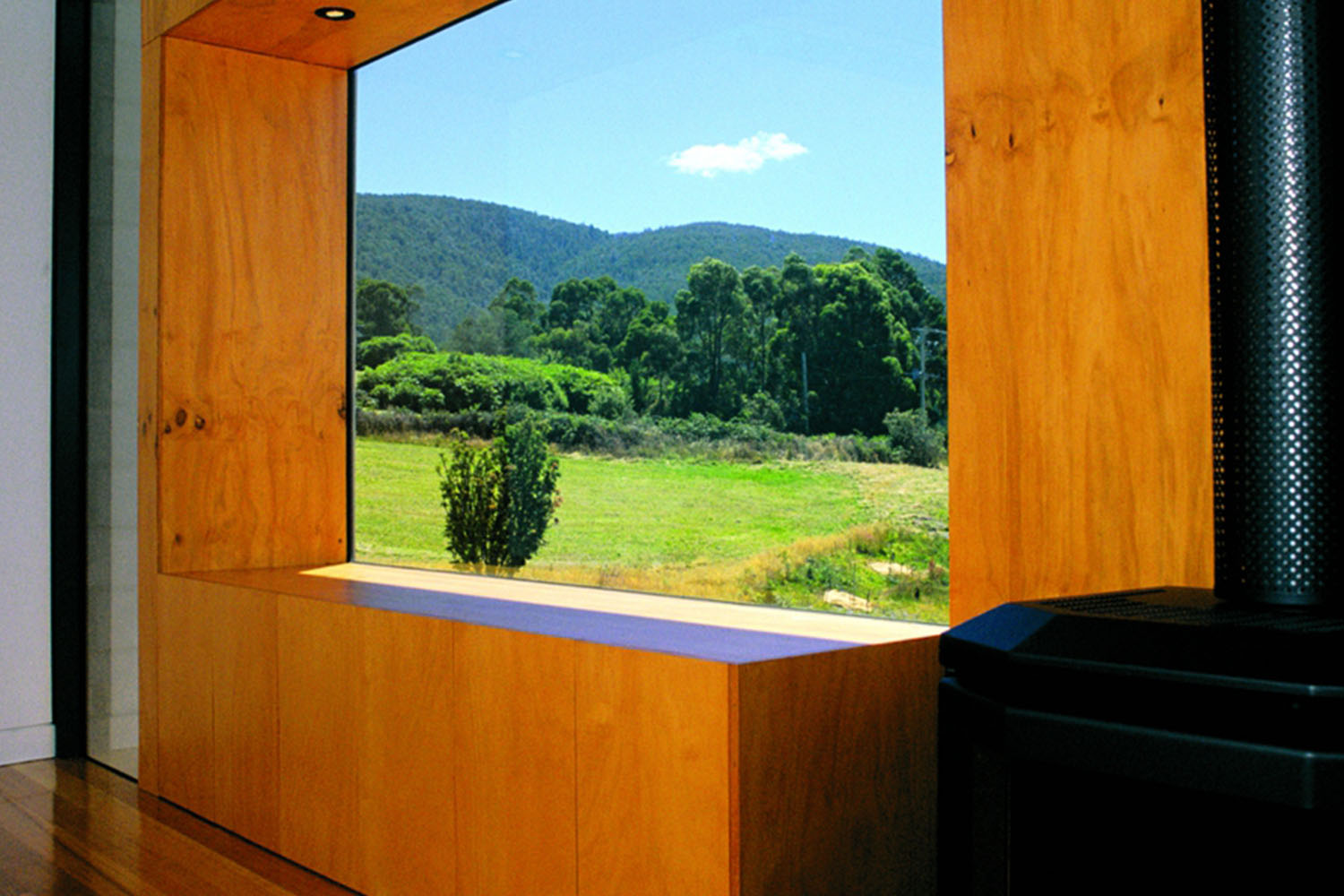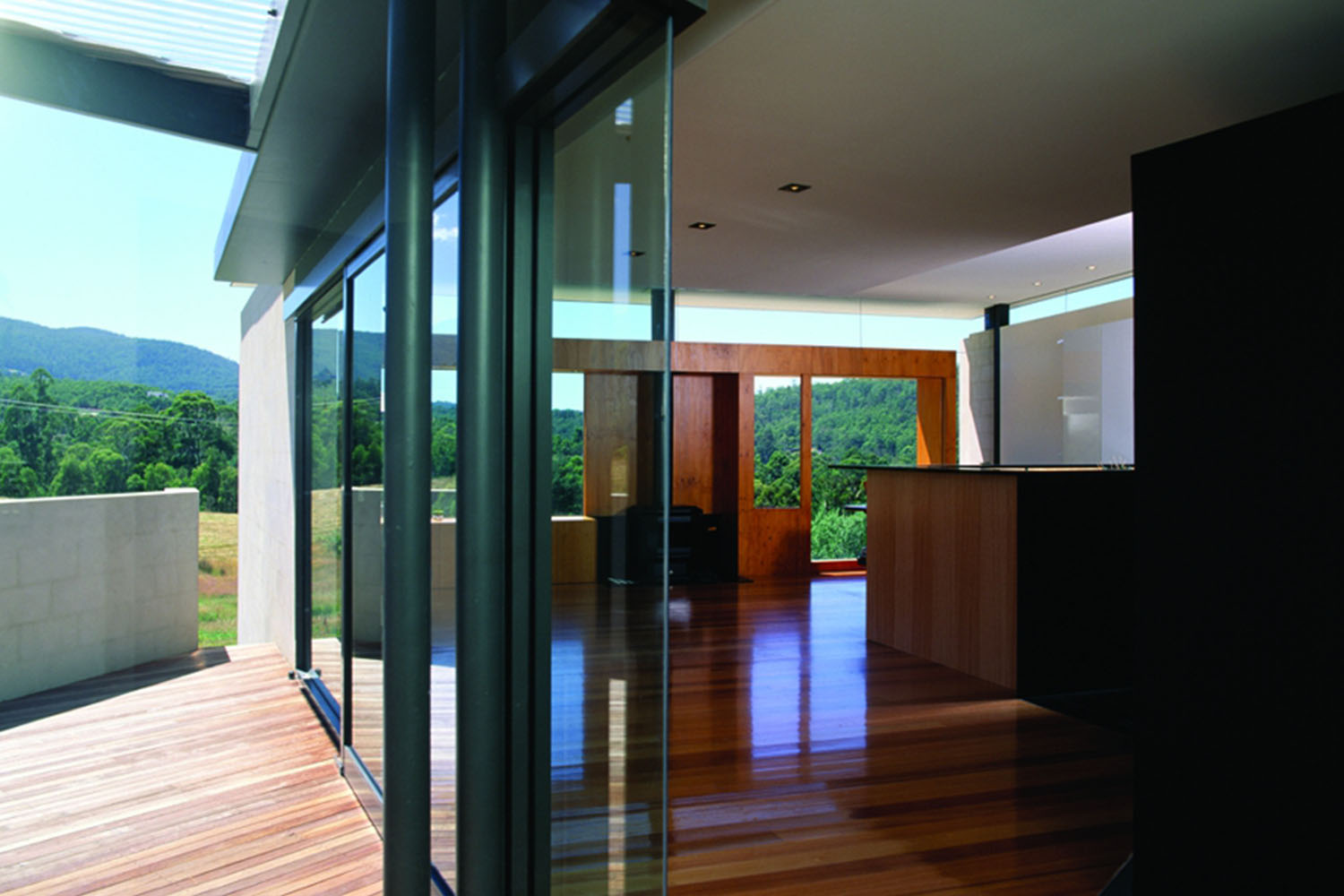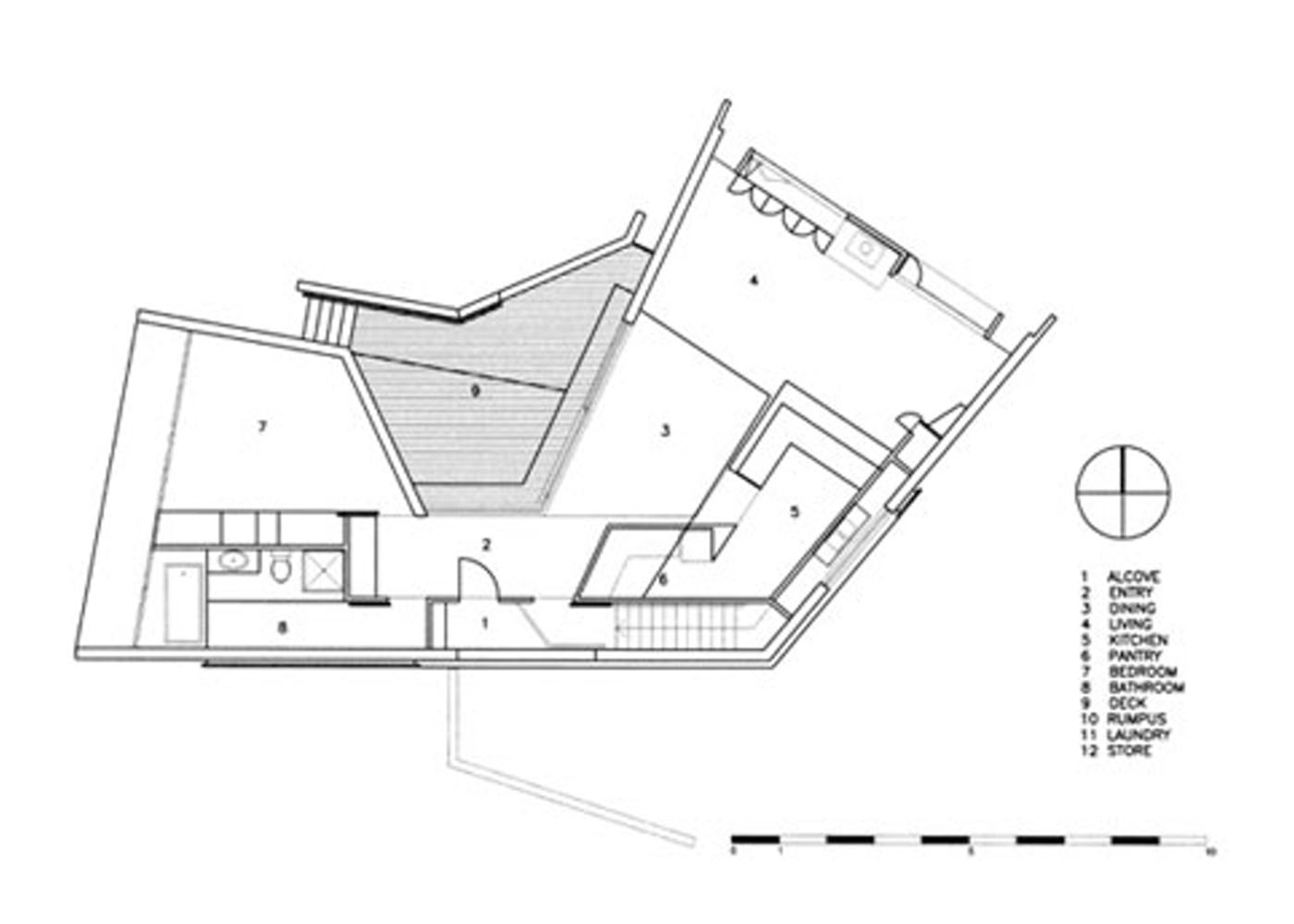-
Lens in the landscape
Longley House
This house is located in a valley at Longley, 30kms south of Hobart. Three key spatial experiences define this valley and have affected the placement of the house: a line of large, evergreen trees to the south which, along with the mountain to the north, provides a sense of containment; a gully running diagonally to this axis, articulating the key fold in the sloping site; and the rise in the ground plane toward a nearby hill in the west.
This project responds to our interest in the possibilities of the archaeological mark in the landscape acknowledging that this land is not an empty, unmarked wilderness but in a country that is the oldest known place of human occupation. Two parallel walls stake out a place in this landscape and while they aspire to an essential, irreducible quality, they resonate with the form of the site.
A “filter” placed between these walls modulates the threshold between the house and the landscape, both climatically and metaphysically. Through the intersection of carefully placed personal objects, this architectural prosthetic allows the occupant to escape the distancing effect of objective ‘voyeur’ and to become subjectively engaged, an ‘actor’ and participant in (rather than simply an observer of) the landscape.
- TYPE Housing
- LOCATION Longley | AU
- YEAR 2001
APPROACH
This house was the first completed by the practice and, as such, it reflected the concerns around which the practice originally formed. A series of discussions regarding the potency of the “threshold” both to an external, physical space and also an internal psychological one. This architectural threshold was understood not just as a physical moderation of light, temperature and moisture between inside and out, but as a space of engagement and exchange – projection and introjection – between the world and us.
